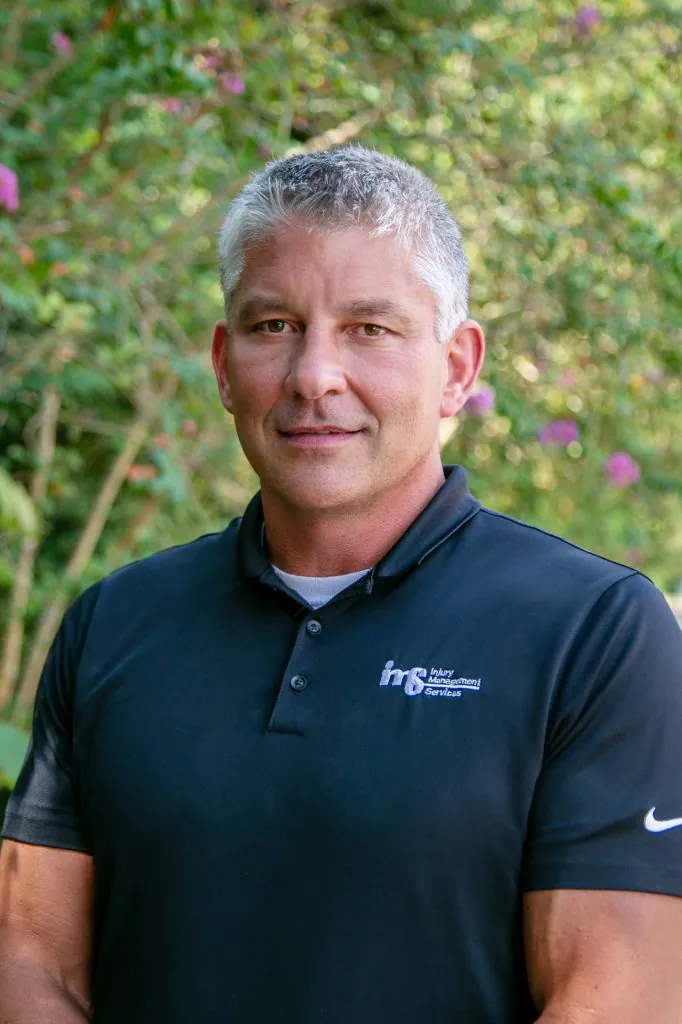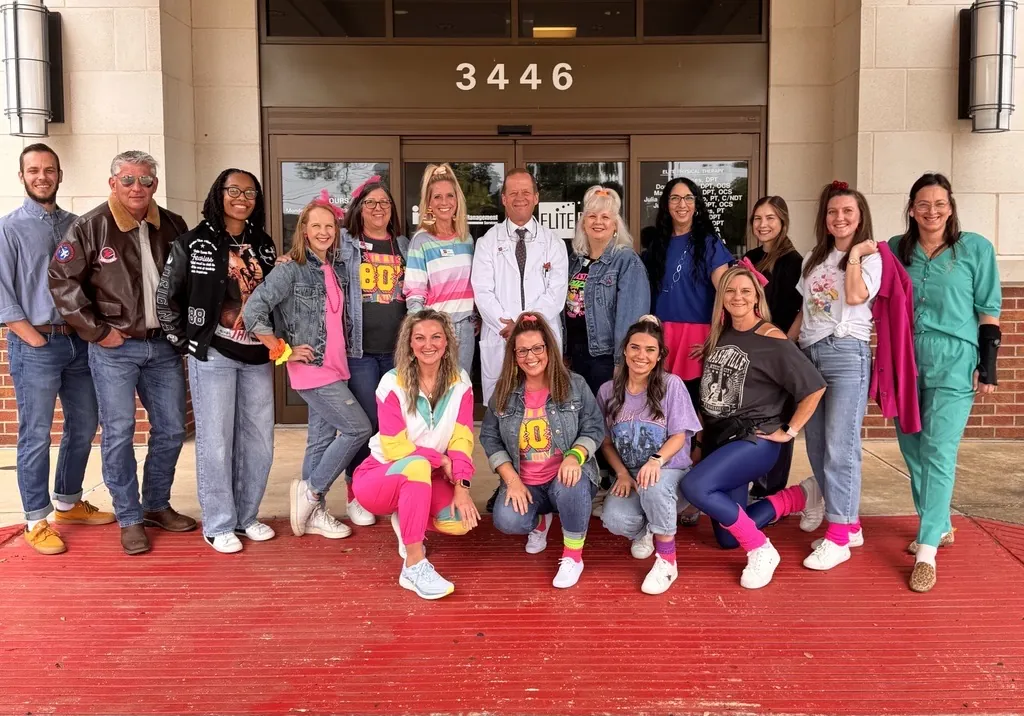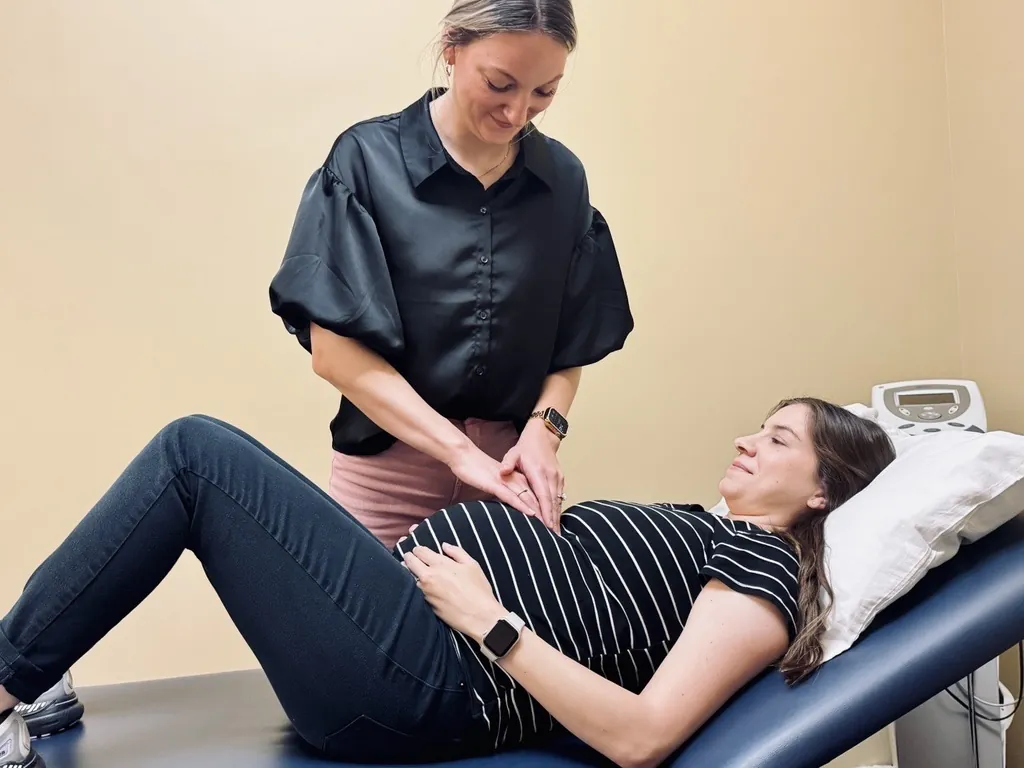April is National Occupational Therapy Month and a great time to recognize our very own team member in Occupational Therapy, Bruce O’Dell, and the important role he plays in delivering quality healthcare to patients in need.
What is Occupational Therapy? Occupational Therapy is a vital profession that helps people across the lifespan to do the things they want and need to do through the therapeutic use of daily activities (occupations). Occupational Therapy practitioners enable people of all ages to live life to its fullest by helping them promote health, and prevent or live better with injury, illness, or disability. Common Occupational Therapy interventions include helping children with disabilities to participate fully in school and social situations, helping people recovering from an injury to regain skills, and providing support for older adults experiencing physical and cognitive changes.
Bruce O’Dell with Injury Management Services (IMS) is the occupational therapist on our team at Elite Physical Therapy. Being able to offer Physical and Occupational Therapy in ONE PLACE in Cenla is a huge benefit for you as a patient! Many times, patients are in need of both PT and OT therapies and we are proud to be able to offer both with Bruce’s help. Bruce is not your typical OT. He offers not only the quality driven care patients are used to from Elite but a very uniquely innovative and necessary perspective on Occupational Therapy. What does Bruce O’Dell’s Occupational Therapy look like? We asked Bruce to share his interesting story and here is what he had to say…
Occupational Therapy with Bruce O’Dell, MOT, CEP, CFCE
Physical Therapists and Occupational Therapists perform two different roles when someone is injured or diagnosed with a debilitating disease process. Physical Therapists are experts in bio-mechanical issues such as restoration of strength, range of motion, endurance, etc…. Occupational Therapists focus on how the injury or disease process interrupts the person’s ability to do the things that they want to do. How did the injury or dysfunction interrupt their life roles as a mother, grandmother, breadwinner, baseball coach, golfer, etc. OTs strive to develop a treatment plan to address anything that the injured person feels that they have lost and wish to work towards achieving. I feel that the video below explains the essence of what an Occupational Therapy intervention may look like. The philosophy that Occupational Therapy is based on fits my personality like a glove. I enjoy seeing people get better while working towards goals that are meaningful to them. Click HERE or the picture to watch Larry’s Story.
Let me say, what I do is not typical of most Occupational Therapists. Numerous patients attending PT at Elite ask their therapist what I do as they have a difficult time figuring it out. When a university sends a student for an internship with me, I clarify with the school and the student that the majority of what I do, is not what most people consider typical OT. I will address this in a moment. I do however do some of the same things for patients that are typical to the OT profession when they are referred for Occupational Therapy. For these patients, the evaluation process is directed by taking an in-depth medical history and social history with the goal of identifying what has been impacted by the individual’s injury or diagnosis. Treatment will focus on whatever the individual is most concerned about, may it be returning to work, yard-work, sewing, etc. Many of OT patients are here for hand therapy, splints, stroke, Parkinson’s, shoulder injuries, etc.
Why did I decide to become an OT? When I started thinking about changing career fields, I was married to a PT, and working in a cardiac rehab program and diabetes center as an Exercise Physiologist at Rapides Regional Medical Center. My wife and I had two small sons and just moved into a house we built on Coulee Crossing. We had just finished sodding the front yard ourselves when I came home and mentioned the idea of going back to school. After considering both OT and PT, I decided that Occupational Therapy was a much closer fit to my personality. With my background in exercise physiology, my wife’s employers, one of which was Bart Jones, DPT, offered me a stipend while I attended OT school. He and his partners wanted me to start an Industrial Rehabilitation Program for their clinics. I discussed it with my wife and we rented out our new home and moved to a small apartment in Denton, Texas where I attended Texas Woman’s University – their OT program was ranked 6th in the nation at that time.
Occupational therapists and physical therapists work as a team. If we both did the same job, you would only need one of us. I have been certified in a program that does exactly what the profession of occupational therapy is designed to do. The program is for individual’s that do not progress down the clinical ladder as fast as they should. The program is called PGAP. It is a form of “Activity Coaching.” It helps individuals regain their life after it was disrupted by an illness or an injury. Below there are links to two interesting videos describing what this entails.
Activity Coaching with PGAP What is PGAP?
One of the more traditional Occupational Therapy services we provide involves splinting. After assessing the patient’s needs, I create custom splints fabricated for carpal tunnel, cubital tunnel, De Quervain’s, extensor tendon laceration, flexor tendon laceration, tennis elbow, golfer’s elbow, RA, CMC OA, spasticity and more…. Click HERE or click the picture below to see the video on this creative process.
I enjoy working will all OT patients but especially the non-typical patients, Industrial Rehabilitation, that take up the largest portion of my job. Physicians as well as the Elite Physical Therapys need someone to define work restrictions for their patients prior to their return to work. They also need someone to quantify the individual’s loss as a result of their injury in the form of an impairment rating. Once the physician determines that the patient is at maximal medical improvement and there is nothing more medically that they can offer, the physician will typically send them to me at IMS for a Functional Capacity Evaluation (FCE) and impairment rating. These evaluations define what the individual can do at work on a safe and dependable basis. I am a certified functional capacity evaluator and have completed Advanced Training in FCE’s performing 1000’s over the last 20 years.
IMS provides Occupational Therapy services to many employers in Central Louisiana. A short list includes Roy O. Martin, Cleco, Christus St. Francis Cabrini, Proctor & Gamble, Pine Bluff Sand & Gravel, Acadian Ambulance, Med Express, and W.E. McDonald. I personally have completed over 11,000 Post Offer Employment Test (POET) for two national testing companies. These national pre/post offer employment testing (POET) companies have therapy clinics in cities all over the United States allowing new hires the option of being tested close to where they live. These companies constantly monitor employment law and amend their policies and procedures accordingly to keep the companies and therapists they serve safe. I attend yearly symposiums to get updates on changes to the test protocols and testing procedures.
We provide these companies with a comprehensive injury management program to assist in managing both new hires and existing employees that includes post offer employment tests and/or agility tests for new hires as well as Fit for Duty Test, Functional Capacity Evaluations, and work station evaluations/office ergonomics for existing employees. Click HERE or the picture below for a link showing all the employers that I conduct post offer employment testing (POET) for.
We also assist with employee education in the form of safety talks on proper lifting and stretching, etc. IMS has partnered with both Roy O. Martin and Cleco to develop company wide stretching programs specific to the type of work that an employee engages in on a daily basis. Four years after starting post offer employment testing (POET) with Christus St. Francis Cabrini, Christa Book, LPN, Employee Health Nurse and I received an award for the hospital having the lowest worker’s comp cost of all the Christus Hospitals.
Statistically 80 percent of injuries come from 10 percent of employees that were physically unable to do the job at the time of hire. Post offer employment testing (POET) ensures that the new hire is physically able to perform the physical requirements of the job title for which they are applying. This entire process requires that each employer have updated Functional Job Descriptions that accurately reflect the physical requirements of their jobs. IMS assist employers in developing Functional Job Descriptions that are ADA, EEOC compliant. Click HERE or the picture to see a video explaining this process.
The OT relationship with companies also includes providing injury evaluations for their staff. For example, St. Francis Cabrini Employee Health Nurse, Christa Book, LPN, will call for a workstation evaluation when an employee has symptoms of carpal tunnel, neck pain, low back pain with radicular symptoms going into the leg. We personally make a visit to the worker’s office. Any factor that may be contributing to their symptoms is eliminated. At times the worker is resting their forearms on the desk (contact pressure on nerves), leaning forward working out of a corner (forward head posture), they may be laterally flexing the neck on phone calls lasting 30 to 40 minutes multiple times per day, sitting for prolonged periods with back pain. Modifications to the workstation are recommended based on both their medical history and presentation. These modifications may involve a keyboard tray, headset, articulating footrest, moving monitors, adding risers, or ordering sit/stand desk to manage low back pain. The employee is appreciative that their employer cares and is trying to assist them in conservative management of their health issues. The goal is to address symptoms early before they become more serious.
For more details on the certifications related to Industrial Rehab, click HERE.
Another program that we provide relates to Industrial Rehabilitation and is called “Work Conditioning”. I have maintained my license as a Clinical Exercise Physiologist both with the state and with the American College of Sports Medicine. When I was in school, studying for tests for me was like reading a hunting or fishing magazine for others. I enjoyed every second of learning about exercise physiology, cardiac rehab, diabetes, contemporary motor learning theories for individuals that have had stroke, etc. My job is like a hobby that I get paid for. When the physician’s or PTs have a patient that has completed therapy and is going back to a physically demanding job, they will send them to me for Work Conditioning. Many times, the injured worker has been sitting on the couch while rehabbing their shoulder, wrist, elbow, knee, ankle, etc. Now their physician is getting ready to send them back to work and they have become deconditioned and gained weight. Occupations such as a floor hand will be going back to an oil rig will be expected to climb stairs all day. Linemen must climb poles, deckhands hook up barges, etc. These tasks are physically demanding. Case managers, physicians and therapists frequently recommend work conditioning for their patients to lower their risk of re-injury and make re-entry into the workforce much easier. This program focuses on whole body strength and endurance. The injured worker will do both aerobic exercise and strength training to improve their work tolerance prior to discharge from their doctor’s care.
I love my job as though it were a favorite hobby, but I enjoy my free time more of being active at home and with my family. I purchased a home on an oxbow on the Red River. The Bible says: “But everyone who hears these words of mine and does not put them into practice is like a foolish man who built his house on sand.” My house is on river sand. My hobbies involve stopping erosion 24/7! I build retaining walls, haul rocks, spread rocks, plant grass, buy top soil, and spread topsoil.
Prior to moving to a house built on sand, I did coach all of my children in soccer both recreationally and competitively. I started my own soccer league that focused on skill building through small sided games, 4 on 4. The league ran for 9 years. I was on the Crossroads Soccer board for years, and ran the indoor facility for a season. I also volunteered to coach the Grace Christian junior high girls for a couple of years. I enjoyed getting to know all the players I coached. That was the best part of the entire coaching experience. It makes me feel good every time I run into one of my old players. One team got together when they were 18 and sat on a bench in the same order they were in when they were young. They gave it to me for Christmas and it hangs in my office to this day. Good times!
I married my younger sister’s best friend and we celebrated our 30 year wedding anniversary last May. We have three children, two boys and one daughter. My oldest is a nurse fighting the coronavirus in Atlanta so feel free to pray for him (Cole). My middle son (Brooks) builds websites, does social media marketing, wedding videos and just about anything you want to pay him for. He is an extremely talented guy. My daughter, Mary is in college planning to go into healthcare.
When Elite asked me to tell you about myself, they asked, “What is something that people may not know about you?”. I was the ring bearer in my parents’ wedding. My mom was a single parent of four. She passed away when I was 9 years old. Her younger brother, Gary Smith was 21 years old. His wife, Debbie Smith, was only a few months older than him. At 21 years of age, they took a 9-year-old to raise. I look at my kids, other kids and I remember myself at 21 and it is hard to believe. They raised me on a farm. We had horses, 14 or 15 hunting dogs, 300 pigs (once), chickens occasionally and a cow or two. Don’t make the mistake of naming them or that’s what your supper will be called for the next year! My mom, (Debbie), had breakfast for me every morning, a snack after school and we all ate supper at 6 as a family. In the summer, we would leave the field and be home at 12 noon sharp. The food was on the table with the tea poured in the glass. We would eat, watch the end of the news and a few minutes of Days of Our Lives. (Marlana has not changed a bit!)
My mom, Debbie, had plenty to deal with as a farmer’s wife. Good crops and the prices were low. Prices were good and the weather was bad. She had Crohn’s Disease. In all this adversity, she never got down. She was diagnosed with cancer in the latter part of 2019. Just six weeks before her diagnosis, she was walking with friends all over Boston. Within five weeks of her diagnosis, she left this world to go to her maker with my Dad, all of her children and their spouses and grandchildren around her. I have never known and never will know anyone that handled adversity the way she did. My mom was always up, always happy and always ready to go somewhere. She loved her children and her grandchildren. I am the luckiest guy in the world to have had two wonderful mothers that I will cherish until the day I die. I miss her more as time goes on. She is and was a model of how to handle adversity. We need to cherish the time we have with our loved ones while we are locked away with them during this pandemic. God is in control.
Stay Healthy and God Bless,
Bruce O’Dell, MOT, CEP, CFCE




